Is it possible to plant eggplants and peppers in the same greenhouse or open field
Among the heat-loving vegetable crops, peppers and eggplants coexist well in the same greenhouse. After all, they have a lot in common in terms of growing conditions and methods of caring for them. The compatibility of vegetables allows them to bring high yields, even while in the same garden. It is important to correctly place vegetable crops here, because other garden plants with similar care requirements are grown in greenhouses.
Content
- 1 Comparative characteristics of vegetables for a greenhouse
- 2 Preparing seedlings for the greenhouse
- 3 Preparing seedlings and greenhouse for planting
- 4 Terms and schemes of planting peppers and eggplant
- 5 Tips for the care of peppers and eggplants in the greenhouse
- 6 Diseases of vegetable plants
- 7 Pepper and eggplant pests - how to destroy them
Comparative characteristics of vegetables for a greenhouse
To place vegetables in one greenhouse, you need to know their characteristics, whether they are compatible in terms of temperature, humidity, soil composition.
Pepper and eggplant are similar in growing conditions. They coexist peacefully, because they have in common such indicators as:
- high humidity of air and soil, up to 80 and 70 percent, respectively;
- air temperature is not lower than 20 - 25 degrees;
- the acidity of the soil is normal or slightly increased;
- the ripening period of crops reaches four months from the day the first shoots appear.
It is better to plant eggplants and peppers in a greenhouse, because in the open field they may not ripen under adverse climatic and weather conditions.
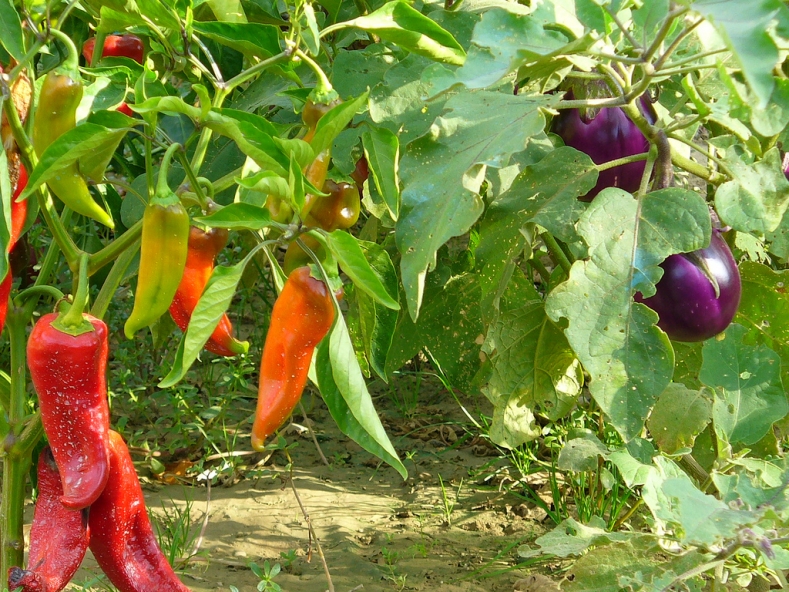
Preparing seedlings for the greenhouse
Pepper seeds with eggplant begin to be sown at the end of February. It is too late to do this in March - they will not have time to give ripe fruits in autumn.
Preparing seeds for planting
After checking the germination of the seed, it is soaked first in a solution of potassium permanganate for twenty minutes, then in an Epin or Zircon growth stimulator. It is enough to keep the seeds in the stimulating liquid for eighteen hours. At the next stage, the seed is placed first in warm water for a day, and then in a refrigerator for hardening.
Knowing how difficult it is to grow peppers and eggplants, the seeds are arranged with air bubbles, or bubbling.
Having placed the seeds of vegetables in a container with warm water, they lower the compressor for the aquarium there. The procedure takes half an hour. Now the seeds are saturated with oxygen, strong healthy plants will appear from them. It remains to consider that the landing and leaving would be correct.
Correct preparation of soil and containers
Deep containers, steamed in advance, are filled with nutritious loose soil. For peppers and eggplants, it is important that the soil is not overly acidic. Therefore, the best option would be a mixture of peat and humus, taken in equal quantities along with sawdust.Wood waste can be replaced with coarse river sand. It will make the soil friable and airy with the introduction of ash. Phosphate fertilizer will saturate the soil mixture with useful substances.
Before sowing vegetables on seedlings, the soil is spilled with boiling water for disinfection. Frying it in the oven will also be effective. Such actions will allow the seedlings not to be infected with pathogenic fungi and bacteria. Be sure to leave the soil in the open air after disinfection to saturate it with beneficial microorganisms.
Planting seeds
Planting begins a week after the preparatory work. Spread the hatched seeds at a distance of one and a half centimeters on the soil of the container, covering them with earth, with a layer of one and a half to two centimeters. You can sow eggplants next to the pepper. Be sure to spill the soil with warm water after sowing.
For rapid germination, the containers are covered with polyethylene film on top and placed in a warm, sunny place. Every day, mini greenhouses are ventilated, making sure that there are no drafts.
After the emergence of seedlings, the covering material is removed. As soon as two to four true leaves are formed, eggplant seedlings with pepper dive.

Seedling care consists of:
- watering with warm, settled water;
- gently loosening the soil in pots;
- feeding with fertilizers containing nitrogen;
- spraying with growth stimulants;
- air humidification with a spray bottle.
Strong seedlings are the key to a good quality harvest of pepper and eggplant.
Preparing seedlings and greenhouse for planting
Planting peppers and eggplants in the greenhouse is the same as in the open field. The seedlings are gradually hardened, taking them out to the balcony or veranda, first for several hours, then increasing the time. Tempering can be done by lowering the room temperature. At the same time, the number of waterings is also reduced. A week before transplanting into the greenhouse, eggplants and peppers are sprayed with Bordeaux liquid. For the procedure, fifty grams of the substance is diluted in ten liters of warm water. Such preventive procedures will reduce the risk of fungal diseases in greenhouse conditions.
Planting seedlings requires greenhouse preparation:
- To create a high temperature in them, the room is filled with hot manure, starting from the end of February.
- Manure is heated with hot water, quicklime, pouring it into special nests.
- As soon as all layers of manure are heated, it is mixed.
- Manure is distributed along the walls of the room, compacting it well.
- The outer part of the greenhouse, covered with mats, heats up well, which will help the peppers and eggplants in the greenhouse to bear fruit successfully.
- The settled manure is covered with a layer of earth. Two days later, experts advise, plant the grown seedlings of vegetables.
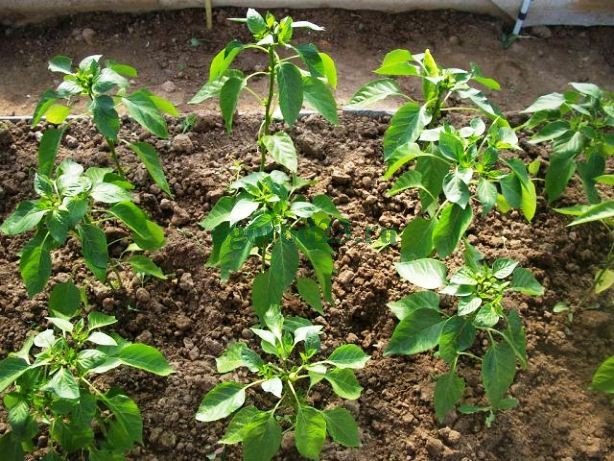
Carefully pulling the plants out of the container, lower them into specially prepared holes. Planting in the greenhouse occurs earlier than in the garden. There are certain requirements for seedlings:
- Saplings should be up to fifteen to twenty centimeters high, with a strong stem.
- Eggplant - with six or more true leaves. Pepper seedlings have up to ten leaves and several flower ovaries.
- Age ready for planting eggplant seedlings in open ground, as well as in a greenhouse - seventy days. This is their compatibility with peppers.
Competently prepared seedlings will delight you with healthy, tasty fruits in the future.
Terms and schemes of planting peppers and eggplant
The grown seedlings of vegetable crops begin to be transplanted in early May. The beds are prepared in advance. The landing holes are no more than fifteen centimeters deep. Peppers should be planted next to each other no closer than forty or fifty centimeters. Eggplants are planted at a distance of sixty centimeters.
The basic rules for planting seedlings include:
- adding humus, wood ash to the holes;
- immersion of sprouts to the first true leaf;
- planting seedlings in the evening;
- watering each bush with two to three liters of water.
It is better to plant eggplants and peppers per square meter in the amount of six pieces. Then they will have enough nutrients, moisture and air. You can determine at what distance to plant exactly depending on the area of the room. But the thickening of the plantings will lead to a decrease in the yield.
Do not forget that the compatibility of vegetables applies only to sweet peppers. It is better to plant bitter peppers separately, since after pollination the taste of sweet fruits will be disturbed. They will become very bitter.
Tips for the care of peppers and eggplants in the greenhouse
After planting vegetables, you need to properly care for them. Competent care consists of the following techniques:
- Vegetables are often watered, monitoring the condition of the topsoil, preventing it from overdrying.
- Fertilizers are applied five times during the growing season of vegetables. The first time it is enough to water with diluted mullein in a ratio of 1: 5 or bird droppings - 1:15. Subsequently, mineral dressings are introduced - ammonium nitrate, superphosphate, potassium salt.
- Tall varieties of peppers require garters, and eggplants in a greenhouse require pinching.
- Regularly loosen the soil around the vegetable bushes to a shallow depth.
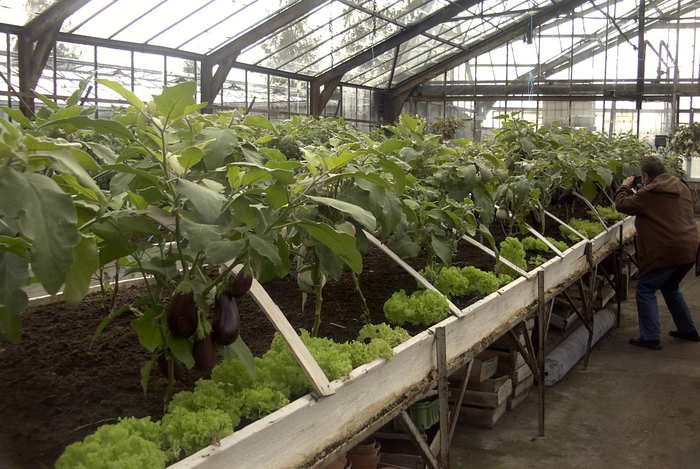
Taking care of heat-loving crops is not difficult. It is the same as when growing peppers, eggplants in the open field.
But for plants indoors, especially if peppers and eggplants are grown in a polycarbonate greenhouse, it is important to observe the temperature regime. The temperature should not exceed 27 degrees, otherwise the leaves of the vegetables will get burned.
Airing the plants will cool the hot air and have a positive effect on pollination of the bushes. To speed up pollination, the plants are shaken every morning. Insects, which are regularly launched into the greenhouse, will also help: wasps, bees, bumblebees.
Many people wonder if it is possible to plant vegetables nearby. Sweet pepper and eggplant get along well. But bitter varieties are often planted in garden beds. Planting eggplant in open ground is undesirable. This vegetable grows well only in warm climates.
Growing peppers and eggplants in a greenhouse is always successful, brings rich yields of vegetables.
Diseases of vegetable plants
The compatibility of peppers, eggplants, even in the fact that they are susceptible to the same diseases:
- The black leg is recognized by the thinning and decay of the root part of the stem. The disease manifests itself if the distance between the plants is not observed, with the density of plantings. Contributes to the development of pathological symptoms, rainy weather and sudden temperature changes. Plants can be cured by spraying with chemicals such as Fitoverm. This method will also help: sprinkle the ground with wood ash or crushed charcoal. Watering the earth with a baking soda solution is used.
- Withering, yellowing of the lower leaves of plants is observed in greenhouses, but in eggplants in the open field, the disease is rare. The spores of the fungus in the soil spread quickly and persist for a very long time. Improper care contributes to the development of signs of illness. Infection can be prevented by creating optimal conditions for the development of vegetable crops, preliminary disinfection of the soil.
- Viral pathology - mosaic - manifests itself in a peculiar color of the leaves. The pattern is obtained from a combination of dark and light areas of the surface of the sheet plate. The disease spreads rapidly and infects all plants in the greenhouse. The disease affects the seeds, so they must be disinfected before planting.
- Underground parts of plants are covered with root rot. Shoots begin to wither, do not bear fruit.If remedial measures are not taken, then vegetable crops die. Spraying them with phytoncides will save them.
- Late blight manifests itself as brown spots in the form of hard rot on fruits. As the disease progresses, it turns vegetables into porridge. Before planting eggplants, peppers, seedlings are treated with a Bordeaux mixture, a solution of copper oxychloride. Sprayed three times per season.
Peppers and eggplants are exposed to diseases with improper care, if inappropriate conditions for vegetation are created for them.
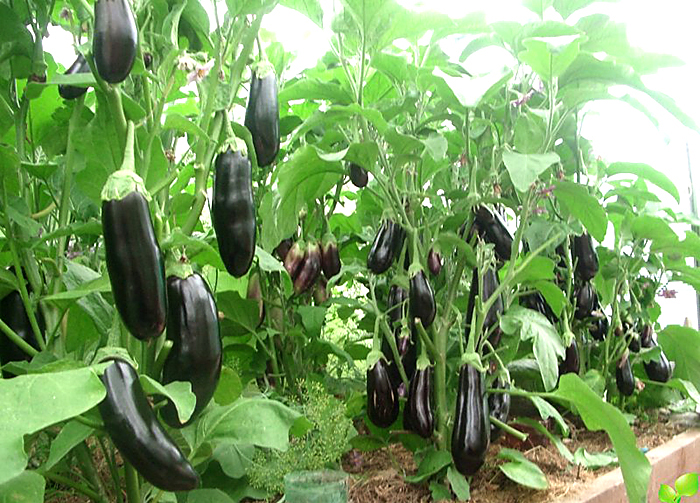
Pepper and eggplant pests - how to destroy them
Aphids often enter the greenhouse from pests. Clusters of miniature insects are visible on young leaves. Eating juices, aphids can move from one plant to another. So all vegetables are infected in the open field. They fight the pest with the help of Pirimicarb, and Karbofos is included in the prevention measures.
The Colorado potato beetle loves to feast on eggplant, ruining the leaves, eating the ovaries. Insecticidal drug Prestige completely copes with the pest.
Due to stagnant air in the greenhouse, high humidity, the spider mite increases the activity. It can be found by the cobwebs that twine around the lower leaves of peppers and eggplants. From folk remedies, an infusion made from onions, garlic, with the addition of liquid soap will be effective. All ingredients are diluted in a bucket of water and sprayed on infected plants.

The locust parasite - the spank beetle damages the leaves of vegetables in greenhouses. To get rid of the beetle, it is collected from plants, pollinated or sprayed with insecticides.
If bears climb into the greenhouse, then this will be noticeable in the moves that they break through in the ground. By nibbling the stems of plants, insects contribute to the death of vegetables. To save greenhouse crops, infusion of hot pepper (150 grams per bucket of water) is poured into the minks made by bears. To prevent a pest attack, the ground in the greenhouse is sprayed with Thunder.
The compatibility of heat-loving vegetables contributes to their successful cultivation. For peppers and eggplants, the best conditions will be greenhouses, where they are not subject to weather and climatic disasters. In closed rooms, it will be convenient to care for plants at no extra cost.
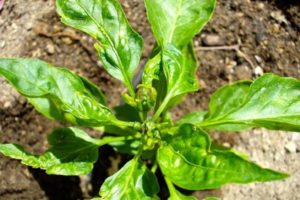
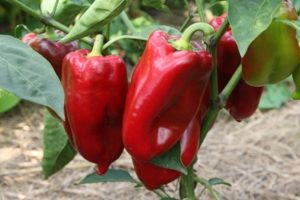






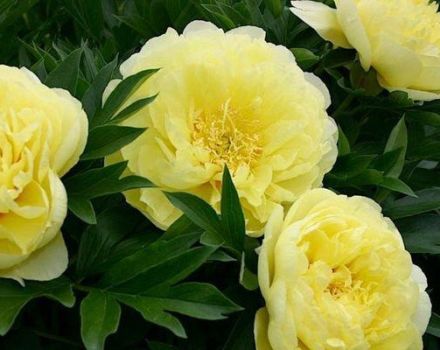

When planting such crops, you must follow the scheme, otherwise no fertilizers and top dressing will help to grow a good harvest. Also, do not forget about abundant and regular watering.